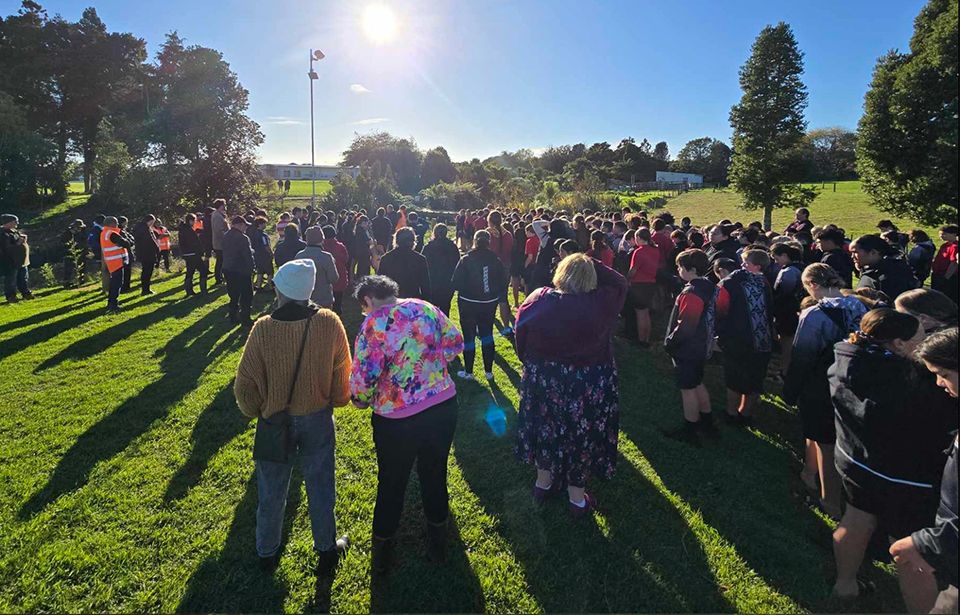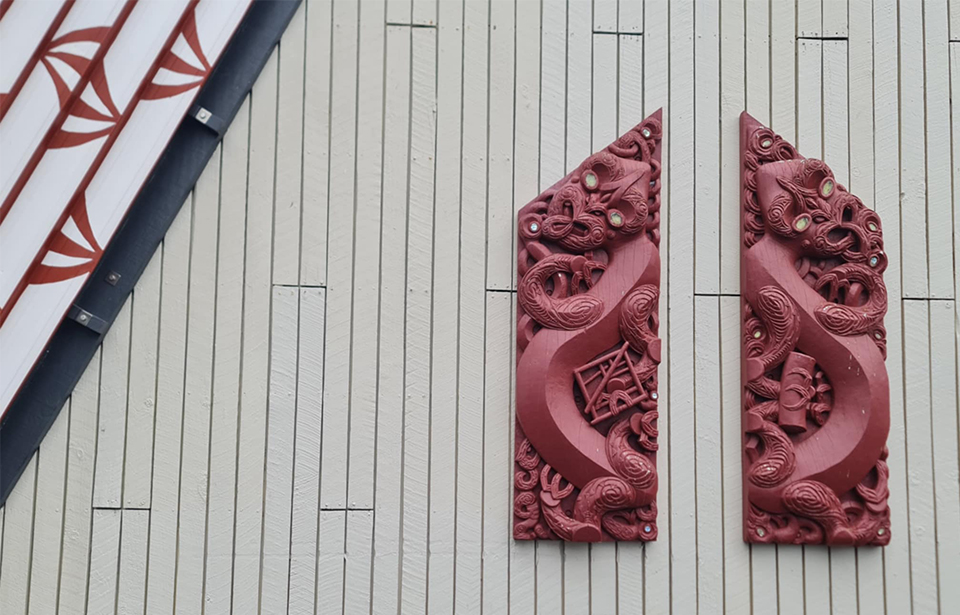Māori education initiative embedding tikanga faces funding loss
• June 26, 2025

The opening of a new boardwalk connecting Waitara High to Manukorihi Intermediate. Photo: supplied
Some teachers fear National’s budget cut to Māori education programmes will reduce cultural responsiveness among schools.
The Māori Achievement Collaborative (MAC), a leadership initiative that supports principals in improving education outcomes for Māori students, is among the $750 million in axed Māori programmes.
MAC deputy national co-ordinator Damon Ritai says the programme has made great advances in schools nationwide.
“We've seen a great increase in kaupapa Māori, te reo Māori, [and] tikanga in schools that have taken up the responsibility under te Tiriti o Waitangi.”
Acting principal and cultural lead at Manukorihi Intermediate, Nicky Niwa, says the cuts to Māori education initiatives like MAC and Te Ahu o Te Reo will significantly affect schools’ ability to maintain cultural responsiveness.
“These programmes are vital in supporting teacher and leader development, as well as authentic integration of te reo and tikanga Māori.
“Losing access to extra support and targeted resources increases the pressure on our staff.
This poses a serious problem, as not all staff feel confident using te reo or integrating Māori perspectives authentically; highlighting the need for sustained PLD, says Niwa.
“Staff are generally committed to bicultural practices, with many engaging in professional learning in te reo Māori, tikanga and culturally responsive pedagogy.
“However, this year, not so much, as Te Ahu o Te Reo has been taken from us again.”

Carvings of Te Rangi Hiroa and Taa Maui Pomare hung on the main hall wall at Manukorihi Intermediate in Taranaki. Photo: Joseph McGee
In 2008, the Ministry of Education released a strategy document called Ka Hikitia, intended to raise Māori achievement.
Ritai says the document outlined three key elements that support Māori learners to succeed in the education system; principles MAC actively upholds in its practices.
“Those three elements were firstly knowing your language, te reo Māori and tikanga; which is integral.
“The second key element is identity; children knowing who they are and where they come from which is explored through understanding the narratives and stories of the whenua and land that the school is built on.
“The last one is around culture, learning about te ao Māori, the world of the Māori, Mātauranga Māori and the knowledge of the Māori.”
Niwa says inclusion requires time with whānau, and deliberate planning; but resource constraints and access to high-quality local relevant Māori resources can be major barriers.

Whakatairanga ka tika, whakamaua ngaa mita
AISHA CAMPBELL (NGĀTI RUANUI, NGĀ RAURU, NGĀ RUAHINE, TE ATIAWA, TARANAKI) • October 28, 2025

Supporters hope new council will save Western Springs Speedway
Savannah Lendich Jonkers • October 8, 2025


Whakatairanga ka tika, whakamaua ngaa mita
AISHA CAMPBELL (NGĀTI RUANUI, NGĀ RAURU, NGĀ RUAHINE, TE ATIAWA, TARANAKI) • October 28, 2025

Supporters hope new council will save Western Springs Speedway
Savannah Lendich Jonkers • October 8, 2025
